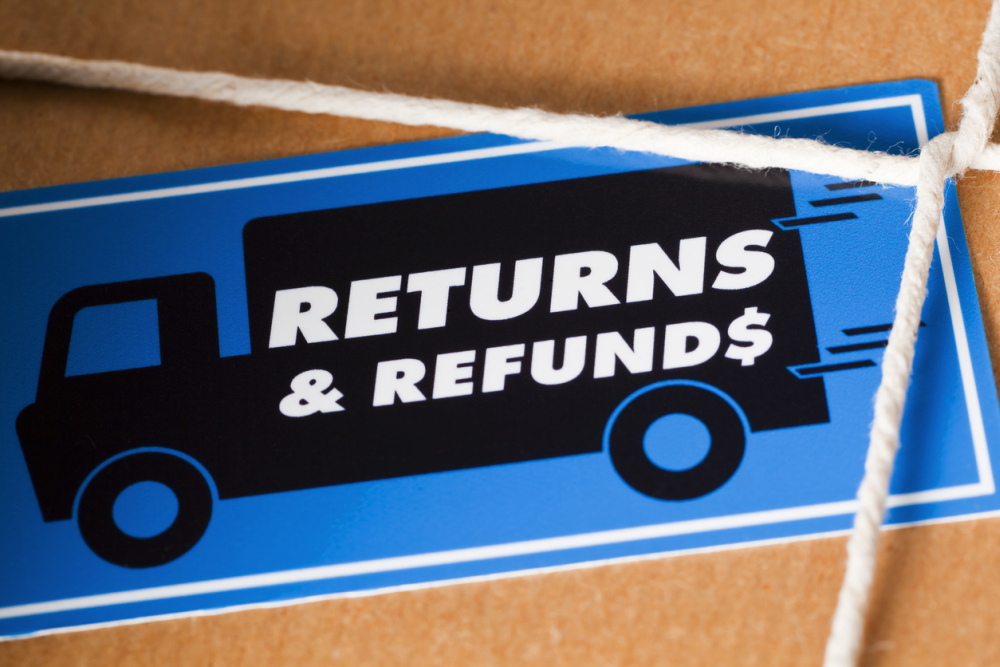31 Oct

Returns, refunds, and exchanges are all part of doing online business. One of the biggest challenges is to achieve an excellent returns experience for customers. Return rate of an e-commerce is higher than that of physical shopping. This effects a lot on you store hence you need to have transparent return process.
To manage returns, many retailers use spreadsheets. However, spreadsheets require time to create manually. It may be worthwhile to use a returns management app that integrates with your Shopify or Shopify Plus platform.
What is a return policy and why do you need one?
Return policies are the rules a retailer creates to manage how customers return and exchange unwanted products they purchased. A return policy tells customers what items can be returned and for what reasons, and the timeframe over which returns are accepted.
Having a return policy is important because getting a return request can be painful both financially and emotionally. Refunding a customer can be loss of profitability and knowing that someone doesn’t like your product can be disheartening too.
The advantages of exchange policy to reduce returns
A good exchange policy may help in reduction of returns and increased consumer satisfaction. Let’s discuss some advantages of return and exchange policy.
1. Offering the customer an exchange helps motivate the buyer to refrain from refunds and choose a better product instead. Showing them that they have the opportunity to get the product they desire by just exchanging instead of returning the product purchased, could prove to be advantage for both the parties.
2. One more reason to opt for an exchange policy along with return policy is the added advantage of minimized transit cost. If there is a solid exchange policy and the customer opts for an exchange rather than returning.
3. With a strong exchange policy the seller can re-affirm the customer to be at ease, in case of unsatisfactory products. A good exchange policy ensures that the buyer can return the product if he felt so. It gives the customer the confidence and boost to buy the product from the site that has a sound and clear policy.
4. Returns go as a Sales Return entry in accounts, thereby booked revenue is reduced, it also triggers refund process to customer, added cost of Payment Gateway for returns via PG, or process hassle of creating a check, bank transfer to customers. Exchange can simply avoid these hassles by strategies such as offering a generous return window of 30 days or longer to attract buyers.
The Best Returns Management App for Shopify

Shopify builds many of their own apps. While there are many Shopify apps that can help with processing e-commerce returns but Returnly does it best.
The app’s self-service returns functionality streamlines and automates the return process, has a helpful support team, delivers a straightforward customer experience, and is easy to install and set-up.
Some of the Returnly features are:
- Customers don’t need to register or log in
- It’s mobile-friendly
- Customers print their own shipping labels
- It has return tracking and shipping verification
- Businesses can customize their return policies
- Analytics help you see how many of your customers are sending items back
- It sends automated emails with return status updates
How to write a return policy

Return policy is the most important for a customer. 96% of people would shop with a retailer again based on an easy or very easy return experience. Let’s look at how to write a great return policy.
The first step to set up a system to handle returns and exchanges is formalizing your policy so you can communicate it clearly with your customers. Policies will vary depending on the logistics of your ecommerce business and the products you sell, but every policy should cover the following basics:
- What items can be returned and exchanged
- What products are “final sale” (i.e., non-returnable, non-exchangeable)
- When things can be returned or exchanged (i.e.. 30, 60, or 90 days past purchase date)
- In what condition can items be returned (i.e., lightly worn, with tags still on, original packaging, original condition, etc.)
- What products can be returned for (i.e., store credit, refund, a product of equal value, etc.)
- How to initiate a return or exchange (i.e., an email address to contact or a web page to visit)
Where to put a standard return policy
Only writing a policy is not enough, you must make sure the customer see it before they buy. Include links to your policy in several places throughout your website. A few key places to list your policy include:
- Your website footer
- FAQ page
- Product page
- Cart
- Checkout
- Website chat
If the return and exchange policy is clearly outlined on your website so it can’t be missed by customers, the right expectations will be set before the purchase is made. There will likely be some customers who are unsatisfied with your store’s policy, but hiding the policy in fine print only leads to a lack of trust.
Strategies for more profitable returns and exchanges
There are a few ways to minimize your losses while still offering returns and exchanges to customers.
1. Turn returns into exchanges
The difference between returns and exchanges is prominent when it comes to profit. When returning a product for a refund, the business usually loss money and return shipping cost. Also you need to return the customer any profit made on the original order.
Whereas, we an exchange you can offer them a replacement of the product with this the loss is often less impactful.
The most common way to encourage exchanges over returns is by only offering to cover the cost of return shipping if the customer chooses to exchange the product.
2. Sell product warranties
When a customer chooses to return a product for a refund or exchange, one risk a company often takes on is whether or not it will be able to resell the item. It can take time for a product to re-enter the stock after a return. Meanwhile the product can be damaged. If a product is expensive, replacing it might not be affordable.
Hence a company should offer warranties for expensive products. Warranties protect businesses against paying to replace damaged products and avoiding disputes over who is to blame.
3. Upsell or cross-sell on exchange requests
One of the ecommerce returns best practice is to upsell or cross-sell on exchange requests. Although exchanges are usually more profitable than returns, yet profits depends on the product and its margin. If exchanges are still costly, it might be a good idea to look at upselling or cross-selling on exchanges.
When a customer comes back to your website to use their store credit, there is an opportunity to show them new products they did not purchase the first time around that compliment what they’re exchanging for. Make sure to adjust your shipping policy for returns and exchanges.
Conclusion
Returns management brings an ever-evolving series of challenges for ecommerce retailers. It is important to remember that in the midst of these challenges are hidden opportunities for growth.
The key point is to write a clear return policy with simple language. Also, give your customers a reasonable time-frame to return items post-purchase.
